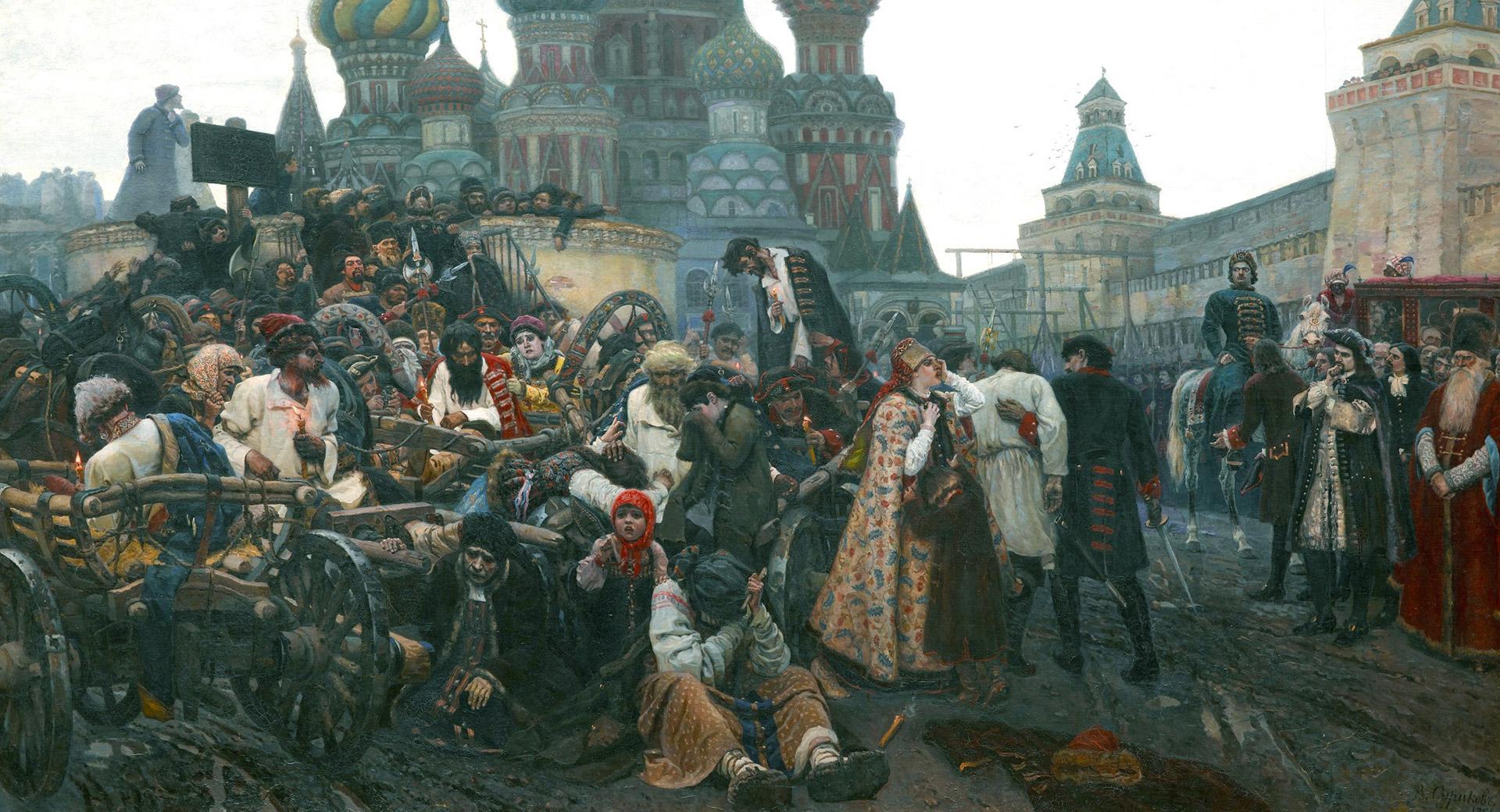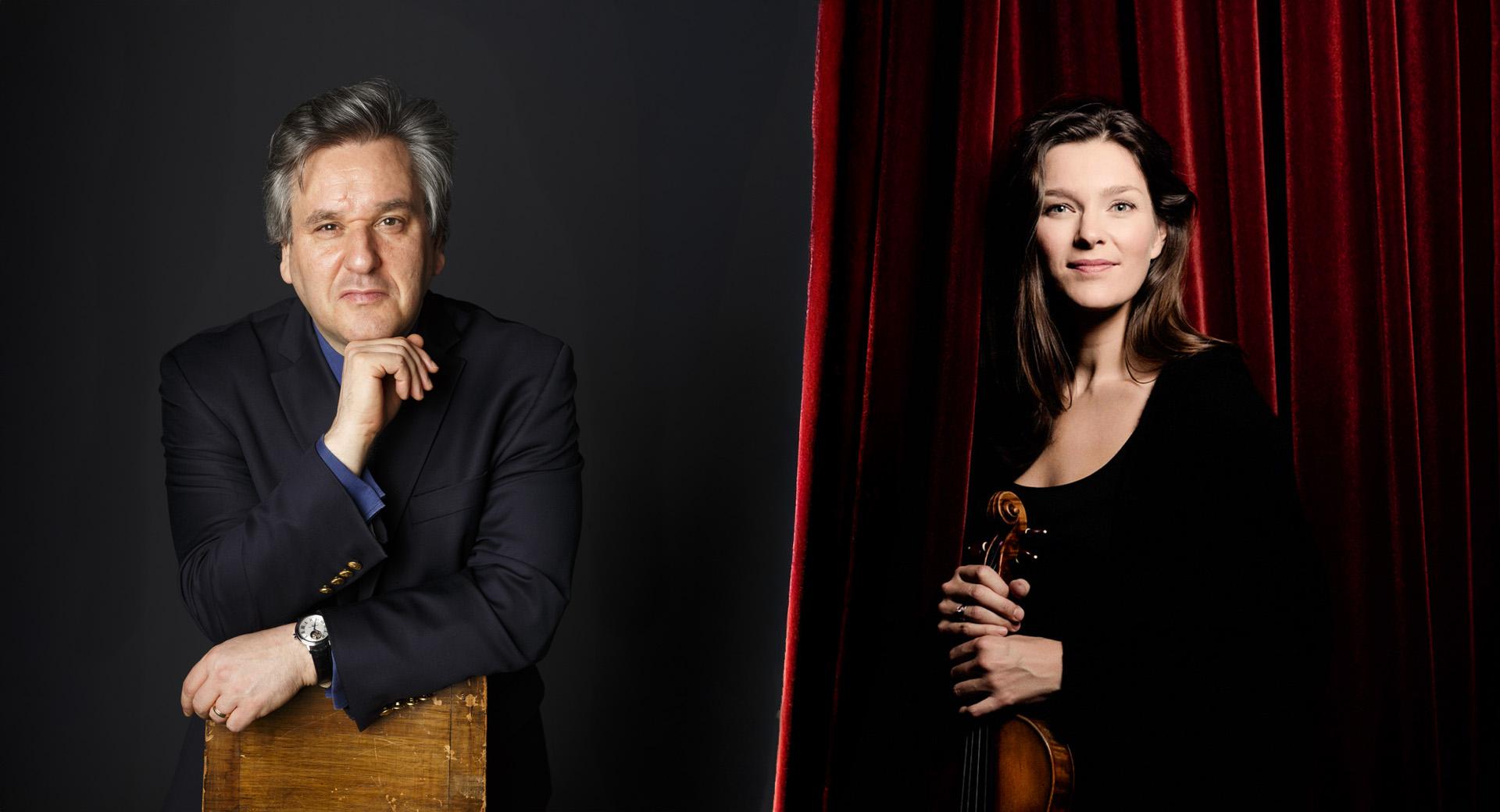Esa-Pekka Salonen conducts Mussorgsky’s Khovanshchina
Concert version of Mussorgsky’s dark, dramatic opera Khovanshchina. It is set at the end of the 17th century, at the beginning of Peter I´s reign, before the young tsar has come of age – the stage is set for a power struggle. The combatants are the military against the tsar, orthodox against reformed religion, east against west. There are magnificent choral parts and powerful personas, including the young widow Marfa, one of the most gripping mezzo-soprano parts in the history of opera.
This production is part of one or more concert series.

The opera is subtitled in Swedish by a text machine in the concert hall. You can also get the subtitles in English directly on your phone via the Subtitle Mobile app. More information will be sent to concert ticket holders before the performance.
Mussorgsky is a composer of the deepest strangeness, power and originality. Unlike his great Russian contemporaries, Tchaikovsky and Rimsky-Korsakov, he had almost no professional training. Instead, he relied almost entirely on his incredible and instinctive ear, and on his formidable gifts as a pianist. He drew inspiration from ancient Russian folk and liturgical music, and – above all – from his beloved native Russian language.
Mussorgsky wanted most of all to tell a story: painting human pictures by weaving words, music and action seamlessly together. Like many Russian artists of his time – including Tchaikovsky, Dostoyevsky, and Repin – Mussorgsky wanted to create epic works that would examine and dramatize the brutal, unhappy destiny of his country. For him, this meant composing ‘chronicle-operas’, sprawling tragic dramas to explain why his country’s history had unfolded and still unfolds in its distinctively catastrophic way.
His first attempt at this form was his setting of Pushkin’s Boris Godunov, a Macbeth-like play about a tyrant who seized the throne of Russia in the late 16th century. Mussorgsky turned next to the so-called ‘Khovanshchina’, set nearly 100 years after the events of Boris Godunov: A number of rival warring parties, led by the violent and ruthless Prince Khovansky, attempted to take control of Russia, until they were utterly defeated by the young Peter the Great at the moment they thought they were on the verge of victory.
Mussorgsky researched deeply the complicated historical facts of this tumultuous period, then compressed them into a libretto of his own creation, a headlong narrative like a Hollywood epic, where events that really took place over several years are made to seem as though they took place almost on a single day.
Once he had written the words, he composed the music like a mosaic over a number of years, adding here and editing or changing there, as his imagination led him. The result was some of the greatest music he ever wrote, heart-rending in the depth of its feelings, devastating in the darkness of its pessimism, and everywhere shot through with the distinctive colours of his beloved church bells, priestly chants, and wistful folk-melodies.
But Mussorgsky never quite finished it. Nor did he orchestrate more than a tiny part of this huge score, which is written like a colossal song for voices and piano. The notorious cause of his failure was the alcoholism which killed him in 1881. His friend Rimsky-Korsakov made the first performing version, albeit full of cuts and corrections according to his own artistic tastes.
The great Serge Diaghilev dreamt of making a version closer to Mussorgsky’s intentions, and asked Ravel and Stravinsky to take on the job together. Of this version, all that survives is Stravinsky’s beautiful ending, written around the time of the first performance of The Rite of Spring in 1913.
In the late 1950s, Dmitri Shostakovich orchestrated Mussorgsky’s piano score. This version has been used for most performances since then. Sometime later, Stravinsky’s ending was rediscovered and is now frequently used in performances. Also, a number of lost sketches for the final scene have been rediscovered in Russian archives.
In this performance, you will hear Shostakovich’s orchestration of the main part of the score, Stravinsky’s eerie and beautiful ending, and – between them, like a kind of bridge – a new reconstruction of the long-lost sketches by the present writer. The idea was to give modern listeners a chance to experience what survives of Mussorgsky’s original thoughts, without competing with the achievements of Shostakovich and Stravinsky. To that end, it seemed extremely important to hear the fragments as scraps, incomplete remains, like jottings in a private diary, brought to life without destroying their fragmentary nature.
One idea was to float them on a newly created soundscape by distinguished sound-artist Tuomas Norvio. As the action of this final scene takes place deep in the ancient Russian forest, Norvio’s creation should gently conjure up that huge world of nature, the individual musical fragments emerging like breaths from within that world.
Also important was to bridge the very different styles of Shostakovich and Stravinsky. Shostakovich, writing from a lifetime of immersion in Mussorgsky’s music, created an orchestral canvas of incredible bleakness and grandeur. Stravinsky, on the other hand, worked in a different, earlier musical language and only from Mussorgsky’s verbal description of the intense mystical quietness that he wanted at the end of his opera.
The bridge of fragments should take us from Shostakovich’s musical world to that of Stravinsky, so that we experience in different ways how both these great composers were rooted in the amazing achievements of their predecessor, Modest Mussorgsky.
Gerard McBurney



